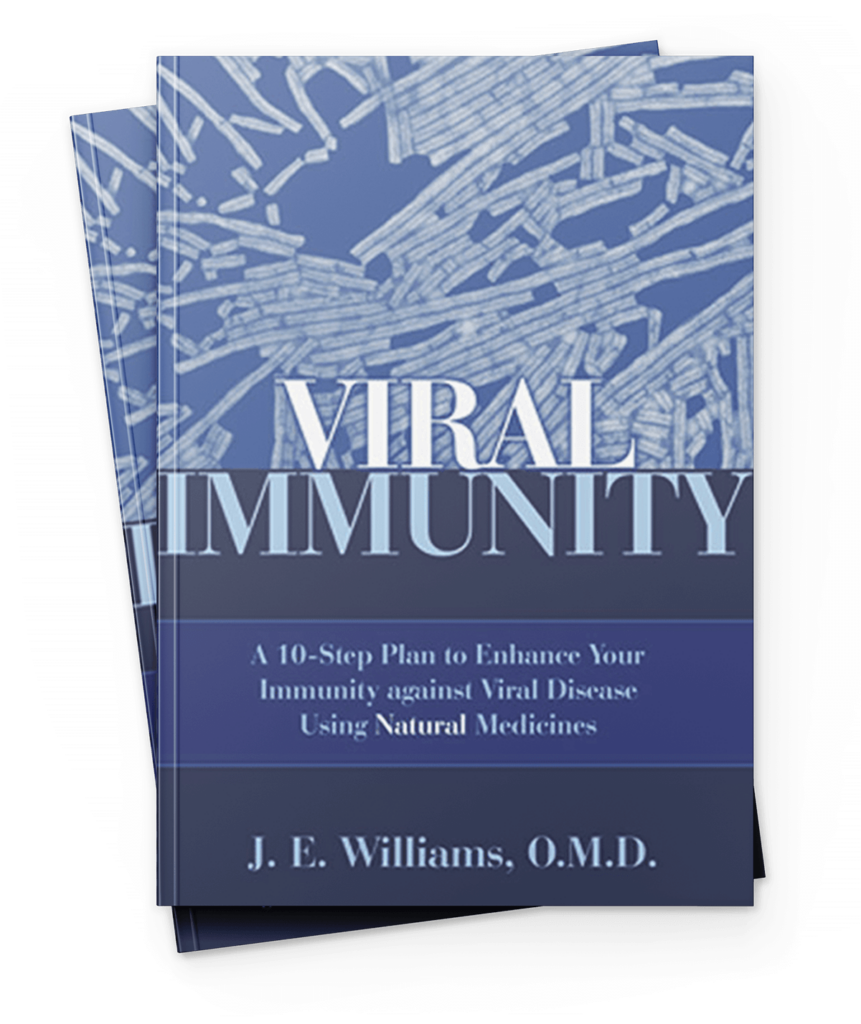When Fatigue Replaces Fever
| | Reading Time: 11 minutes

Why Post-Infectious Syndromes Like Long COVID Defy Conventional Medical Understanding and How You Can Reverse It
PART ONE: Markers of Inflammation
Chronic inflammation: With COVID-19, we’ve come to one of the major cruxes of the modern immune dilemma. Between late 2019 and 2022, we had a global pandemic of unprecedented proportions, and it uncovered an immune crisis that was in the making for decades.
Before the Pandemic, we had Polio, AIDS, HCV, CFIDS, SARS, and MERS, and a tenfold surge of Dengue. Then, the COVID-19 pandemic swept unchecked across the world. Now we have Long COVID. The CDC estimated about 18 million Americans have or had Long COVID.
2002, I wrote about this viral crisis in my book Viral Immunity. Unfortunately, most clinicians give little attention to patients with persistent fatigue. Twenty years later, it’s time for a change.
In this article, I focus on the body’s first line of defense against inflammation and fever and why they are disrupted, suppressed, and blunted. I discuss fatigue and how it replaces inflammation and fever as the most predominant symptoms of the new chronic diseases. I will explain why it is crucial for you to recognize this deviation from normal immunity for a better understanding of Long COVID and how to care for yourself if you have Long COVID.
Understanding The Immune Crisis
I explain it as follows:
- There is a breakdown in the normal innate immune response mechanisms.
- Fever and acute inflammation, the classic symptoms associated with infection, are blunted or absent, while fatigue is more predominant.
- This “reversal” of the natural mechanisms allows viruses to bypass non-specific phases of the immune response.
- Once past the front-line immune barriers and into the bloodstream, viruses can go directly to a target organ or tissue, including immune cells, and cause considerable damage.
- This results in a variety of chronic diseases, the worst being AIDS, CFIDS, and chronic HCV, as well as autoimmune-related nervous system diseases such as multiple sclerosis. And the newest post-infection condition: Long COVID.
The cause of this breakdown of the natural immune cycle is multi-factorial. Since it affects many parts of the body and their functions, it is not easy to pinpoint a single cause. That’s why there are so many variations of Long COVID. Unlike the proverbial rotten apple, all the apples in the barrel are spoiling at the same time.
However, researchers seem confident that the causes include environmental toxins, genomic confusion by hormone disrupters, stress-triggered dysfunction of the HPA axis, chronic sleep disturbance, immune suppressive drugs, mitochondrial disorders, and lifestyle-related factors such as a calorie-rich but nutrient-poor diet. And increased microbial virulence combined with drug resistance is a significant concern.
Many eminent researchers believe that antiviral resistance to SARS-CoV-2 is inevitable. Their concern is the emergence of an antiviral-resistant pandemic strain.
To make matters worse, HIV, hepatitis B and C, herpes virus, and even influenza are becoming increasingly more resistant to antiviral drugs. SARS-CoV-2 already shows resistance to nirmatrelvir, one of the two antiviral drugs that combine to make Paxlovid.
The Chronic Inflammation Epidemic
It’s also more common to see chronic, persistent, low-grade inflammation in vulnerable parts of the body, as in irritable bowel syndrome (IBS). At the same time, paradoxically, the innate inflammatory response is blunted or absent. We don’t become sick and then get better. We get sick and stay unwell.
Chronic inflammation increases the risk of heart disease and Alzheimer’s. It often accompanies ME/CFS and participates in Long COVID.
An illustrative case study may help you understand the issue better. Martha was a brilliant woman in her mid-thirties who first came to see me with multiple complaints centered around chronic fatigue. In addition, she had allergies, chemical sensitivity, recurrent colds, sinus congestion, and recurring yeast infections. Her medical doctors were treating her with an antidepressant and a drug to kill fungus, and she was self-medicating with an assortment of vitamins and herbs. She also had food intolerances and was very sensitive to many vitamins.
Upon reviewing the history of her condition, I found that she was previously employed in a position that involved a high degree of toxic exposure to pesticides. Except for childhood allergies, for which her tonsils and adenoids were removed, both lymphoid tissue and part of the immune system, she was healthy. She said she had also been under high work pressure and stress for many years.
Martha traced her problems to what she initially thought was a cold that would not disappear. She was severely ill for about four months, though she pushed herself to continue working until she first sought medical advice. Her conventional doctor gave her an antibiotic for sinusitis and recommended rest. However, she had other symptoms, including severe fatigue, joint pain and achy muscles, non-restorative sleep, brain fog, and difficulty with balance and walking.

Anti-inflammatory drugs only provided mild relief, so she pursued further diagnostic studies. These revealed that she had chronic Cytomegalovirus and an elevated antinuclear antibody (ANA), a blood marker found in patients whose immune system is predisposed to or causing inflammation against their connective tissue and can increase in viral or bacterial infections, cancer, autoimmune hormonal diseases, systemic lupus erythematosus, rheumatoid arthritis, and Sjogren’s syndrome. After that, she went to several specialists, including a rheumatologist, who prescribed more nonsteroidal anti-inflammatory drugs. These treatments also failed.
When Martha came for a consultation with me, I found that she had a lifelong allergic condition, which was not adequately addressed, and for which she had her tonsils and adenoids removed in her teens. Several years of ongoing stress combined with occupational exposure to toxic chemicals further weakened her immune system, and her allergies worsened and became complicated by recurring sinus infections. The immune disruption caused by chemical exposure led to a reactivation of a latent Cytomegalovirus infection, which triggered an increase in proinflammatory immune mediators that contributed to her fatigue.
I referred her to an allergist who pinpointed specific allergens and started her on weekly desensitization allergy injections. I treated her with acupuncture, nutritional supplements, and herbal medications, and over time, she gradually improved. At the end of two years of working with me, she went back to work.
Inflammation Is Nature’s Response
Inflammation is part of the healing response. It is a complex process involving both non-specific and specific immunological mechanisms designed to protect our bodies from pathogens and assist in repairing damaged tissue. Healthy, normal tissue is not inflamed.
Since inflammation is a protective, normal response to infection, once the offending agent is removed and the damaged or diseased tissue has healed, the body returns to a healthy state. Inflammation goes down.
In addition, inflammation is not only part of the healing response; it is also a symptom that something is wrong. Inflammation is a common occurrence of daily living as everyone has experienced pain and swelling from a twisted ankle, sore and enlarged tonsils, a stomachache after overeating spicy or acidic foods, a headache, a blister from tight shoes, a cut from working in the garden, or a sunburn.
Inflammation starts when injury occurs from external trauma (such as cuts or burns) or internal deterioration of tissue (such as in cancer, liver disease, or arthritis). Activation of the inflammatory response also occurs from biological insults, such as infection by microorganisms, including viruses.
Types of Inflammation
Inflammation is divided by location into two types: (1) localized and (2) systemic – and by activity, acute or chronic. Localized inflammation occurs when you bang your thumb or have an eye infection like conjunctivitis. Systemic inflammation affects the whole body, as happens in influenza or COVID. When you catch the flu, your joints and muscles ache, and a fever develops. You feel exhausted and want to rest in bed. Systemic inflammation also occurs in more serious viral infections and other diseases, like pneumonitis (inflammation of the lungs) and hepatitis, as well as from COVID when it infects the heart, kidneys, or other organs.
Acute Inflammation
In acute inflammation, several processes occur, resulting in a complex chain of events. White blood production increases and the number of white cells swells. White blood cells, called leukocytes, comprise the immune cells or immunocytes. Once leukocytes arrive at the site of infection, they release chemicals that control the activities of other cells, including the secretion of inflammatory mediators. These include histamine, serotonin, interleukin, complement, and prostaglandin. Plasma molecules and antigens are also released. Swelling occurs in local tissue along with redness and warmth, increasing blood supply to the area.
For minor acute inflammation, the treatment is time, rest, and the application of ice. Elevating an inflamed appendage reduces some of the pressure caused by the swelling. For inflammation caused by an infection, antibiotics or antimicrobial natural medications are necessary to treat severe bacterial infections. Occasionally, surgical drainage is needed to remove infected pus, a thick yellowish fluid formed at the site of inflammation caused by an infection.
Stress Response to Inflammation
Inflammation is a stressor on the body, so the hypothalamic-pituitary-adrenal axis responds by increasing cortisol synthesis from the adrenal gland. Cortisol has natural anti-inflammatory effects. However, many long COVID patients have reduced cortisol levels – another indication of a weakened immune response. Low cortisol causes fatigue.
Additionally, an increased production of acute-phase proteins occurs, like C-reactive protein (CRP), which binds to the membranes of microorganisms, activating the complement system to increase phagocytosis, the non-specific destruction of invading antigens.
CRP has other critical biological functions in non-infectious inflammatory processes, notably heart disease. When chronic inflammation builds up in the heart, an elevated highly sensitive CRP on a lab test predicts a possible heart attack.
Autoimmune Induced Inflammation
Autoimmune responses can cause severe and painful progressive inflammation. This type of inflammation does not resolve normally but persists and can lead to further tissue damage, as in the joint destruction of rheumatoid arthritis or kidney damage in lupus. In these cases, the normally protective and beneficial inflammatory mechanism – usually our ally in healing – becomes our nemesis.
Therapeutically, autoimmune-mediated inflammation must be reduced and neutralized. In conventional medicine, the treatment of choice is steroid drugs like prednisone and nonsteroidal anti-inflammatory drugs (NSAIDs) like aspirin and ibuprofen. Though steroid drugs effectively control symptoms caused by inflammation, they also powerfully suppress immune function, causing further immune imbalance.
Another patient case is of a young woman with rheumatoid arthritis who had been on prednisone for several years. Though the drug did help to reduce some of the inflammation, she had repeated sinus infections because the steroid suppressed her natural immunity, making her more susceptible to infections. Once I stabilized her condition with natural medications, she was able to reduce and then eliminate the prednisone. Her immune system recovered enough so that she had no more sinus problems.
Chronic Inflammation
Another area of concern, particularly in many modern illnesses, is chronic low-grade inflammation. In aging, chronic viral diseases, irritable bowel syndrome, atherosclerosis, fibromyalgia, low back pain, and many other chronic conditions, metabolic processes occur that trigger proinflammatory processes. Chronic inflammation is not a normal part of healthy tissue or aging. In these cases, pain – often constant and debilitating – is usually present and low-grade inflammation persists.
We are just beginning to understand the mechanisms and consequences of chronic inflammation. Though it may be considered an imbalance between anti-inflammatory and proinflammatory immune modulators, such as cytokines like interleukin-1β and chemokines, chronic inflammation is more insidious than once thought. An increase in other proinflammatory chemicals such as prostaglandins – commonly occurring substances derived from arachidonic acid (a fatty acid and critical player in the inflammation cycle) involved in many biological processes – including roles in the mediation of inflammation and nuclear factor Kappa B (NF-ĸB) also occur. In addition, metabolic and endocrine changes take place – like low cortisol – concurrently with chronic inflammation, causing fatigue and generalized low-grade malaise.
Usually, the body has several means to resolve recurring inflammation. It may raise the inflammatory threshold, temporarily causing more pain and stimulating a tissue response to pass through an acute crisis to heal the diseased area. The body can also automatically neutralize proinflammatory immune mediators and their by-products with naturally occurring anti-inflammatory chemicals.
For yet unknown reasons, in many modern illnesses, these naturally occurring mechanisms do not function properly. This state of chronic low-grade inflammation is characterized by pain, increased tissue breakdown, and accelerated aging. Though slowly progressing – and usually not differentiating into a specific disease – the consequences of these conditions result in low-grade illness, fatigue, and reduced quality of life. Examples of conditions where chronic inflammation plays a significant role include irritable bowel syndrome (IBS), fibromyalgia, myositis, interstitial cystitis, non-specific autoimmune disorders, skin diseases like psoriasis, as well as chronic viral illnesses like hepatitis C or herpes virus.
Causes of Chronic Inflammation
Environmental toxins, free radical pathology, abnormal gut bacteria, as well as bacterial and viral infections, and naturally occurring metabolic toxins all trigger immunological responses and can cause chronic inflammation. Stress also plays a significant role.
Stress triggers inflammation and can disrupt the hypothalamic-pituitary-adrenocortical (HPA) axis to such a degree that the naturally occurring anti-inflammatory hormones, such as cortisol, cannot function properly. As we have seen in previous chapters, stress-induced HPA insufficiency weakens the immune system and causes endocrine imbalances that contribute to chronic inflammation, further weakening the immune system. It is a vicious cycle if ever there was one.
Pain Response to Inflammation
A cascade of inflammatory chemicals starts with the induction of cyclooxygenase-2 (Cox-2) pathways. Prostaglandins produce sensitization of nerve tissue in the locally inflamed area and other tissues, causing diffuse muscle and joint pain.
In response to pain and inflammation, interleukin-1β levels increase dramatically in the spinal fluid and travel to the brain. Interleukin-1β leads to more production of Cox-2 and increased synthesis of prostaglandin E2, another potent inflammatory mediator. The result is hypersensitivity to pain, along with the systemic symptoms of inflammation – fever, fatigue, malaise, and anorexia.

Is The Chronic Inflammation of Long COVID Different?
Almost all Long COVID patients experience systemic symptoms like fever or fever-like episodes without an elevated temperature, including chills, headache, arthralgia, and mild dyspnea attributed to cytokine release. These are classic symptoms that doctors call “sickness behavior.” They are mediated by the brain, which recognizes proinflammatory cytokines as signals of infection requiring an immune response.
The innate immune response to pathogen-induced sickness, like acute COVID, involves the release of cytokines, including IL-1, IL-6, and TNF-αlpha. In a healthy person, these proinflammatory cytokines cause fever. TNF-α can have both fever-producing and fever-suppressing effects.
Looking for a common profile, including inflammation markers, for Long COVID has been elusive. One reason is that patients can have all the symptoms of systemic inflammation without having inflamed tissue. Or, they can have tissue inflammation without having elevated markers of inflammation.
3 Basic Laboratory Tests to Evaluate Inflammation
1) ESR is the traditional test used to measure generalized inflammatory activity. This test measures how fast the red blood cells, erythrocytes, settle to form sediment in a test tube. There are different methods of measurement. The Westergren method is one of the most used, and normal values are less than 20 millimeters per hour (mm/hr)—however, the lower the value, the better. For my patients, I want less than 10 mm/hr. The ESR is a helpful screening test for active inflammation in rheumatoid arthritis and other autoimmune diseases. It is also high in a range of inflammatory conditions and infectious illnesses.
2) CRP is a protein produced by the liver that interacts with the complement system and is only present during acute inflammation of the innate immune response, especially in bacterial infections. Like the ESR, it is not specific for any one disease; however, elevation occurs in autoimmune conditions and heart disease, and recent research indicates that elevated CRP may also be associated with Alzheimer’s Disease, arthritis, and metastatic cancer. The CRP-highly sensitive (hs) assesses chronic inflammation in heart disease. CRP is an invaluable marker for evaluating inflammation.
3) ANA, also called the fluorescent antinuclear antibody test (FANA), is a sensitive screening test used to evaluate the presence of autoimmune-induced inflammation. It’s high in systemic lupus erythematosus, Sjogren’s syndrome, rheumatoid arthritis, polymyositis, and other connective tissue diseases. But it’s not always elevated in fibromyalgia. Elevated ANA is present in inflammation of the kidneys and lungs and viral or bacterial infections, as well as in colitis and liver inflammation. Persistent high ANA is common in Long COVID twelve months after initial infection.
On the first visit with a new patient with chronic pain, inflammation, chronic viral illness, other infections, or any disease associated with poor immune function, I will order these tests along with other lab studies.
Patients with chronic illness in the absence of clearly defined pathology often show a moderately elevated ESR in the range of 20-30 mm/hr. Conventional medical doctors are often at a loss to explain to the patient why their sedimentation rate is slightly elevated and frequently dismiss it as not relevant to the case or as a transient elevation due to a “virus.” Or an artifact, a real deviation from normal but not relevant to the patient’s condition.
Normal ESR Levels (Labcorp)
• Female: 0 to 50 years: 0−32 mm/hour, 50 years and older: 0−40 mm/hour
Note: There are age-related and gender variations in the ESR results. Females tend to have higher normal values. And those over 50 years old tend to have higher values.
I think this is a serious clinical mistake. In my opinion, any elevation above 10 mm/hr is suspect for inflammation. Though an elevation of over 30 mm/hr may not make you deathly ill, it is high enough to activate the immune system. These borderline ESR levels serve as an indication of low-grade active inflammation that can make you chronically sick.
If your ESR is in the borderline range, don’t wait. I recommend that you find the cause and treat it appropriately, and not just give a drug to lower the fever. As the patient improves, the ESR returns to normal levels – the closer to between 0 and 3, the better.
A similar scenario with ANA also often occurs. Patients with chronic illness often have a slightly elevated ANA. Though most conventional medical doctors discount this, I believe that healthy people do not have a high ANA.
Blood, saliva, and urinary pH can also serve as indicators of a predisposition to inflammation. The pH scale goes from 0 to 14, with 7.0 being neutral; between 0-6.9 acidic, and 7.1-14 alkaline.
The body holds pH to a very narrow range. Blood pH is between 7.35 and 7.45. Saliva is also slightly alkaline, with an average of 7.4, while urine ranges from slightly acidic in the morning (6.5-7.0) to alkaline in the evening (7.5-8.0).
If the blood or saliva indicates an acidic condition, neutralizing the body towards a slightly alkaline state by a change in diet can help manage chronic inflammation and is discussed in more detail in Part Two.
Selected References
Cervia-Hasler, et al. (2024). Persistent complement dysregulation with signs of thromboinflammation in active Long Covid. Science. https://doi.org/adg7942
Low, R. N., Low, R. J., & Akrami, A. (2023). A review of cytokine-based pathophysiology of Long COVID symptoms. Frontiers in Medicine, 10, 1011936. https://doi.org/10.3389/fmed.2023.1011936
Son K, et al. Circulating antinuclear autoantibodies in COVID-19 survivors predict long COVID symptoms. Eur Respir J. 2023 Jan 12;61(1):2200970. https://doi.org/10.1183/13993003.00970
Talla, A., et al. (2023). Persistent serum protein signatures define an inflammatory subcategory of long COVID. Nature Communications, 14(1), 1-16. https://doi.org/10.1038/s41467-023-38682-4



